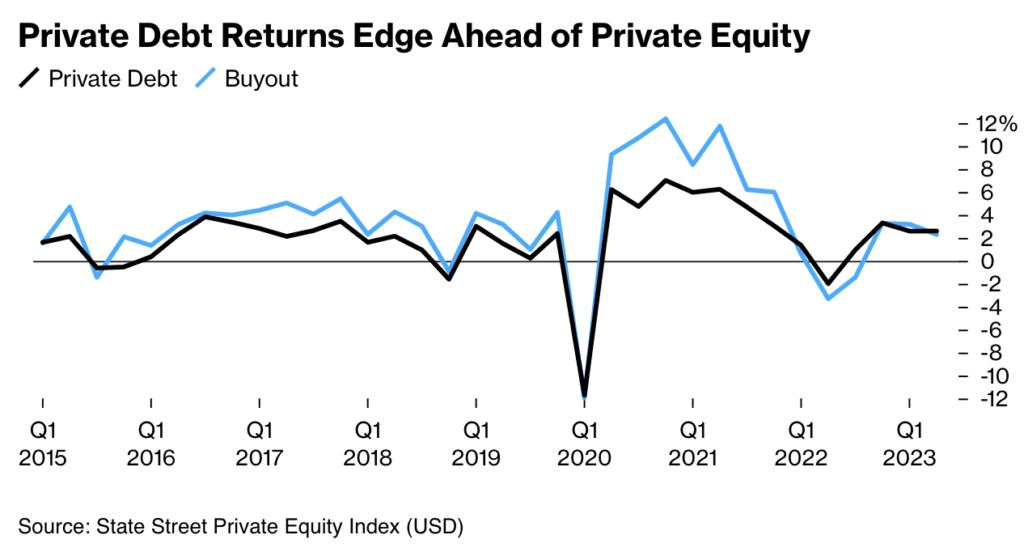
The investment landscape is witnessing a compelling shift, with private credit emerging as a frontrunner in delivering superior returns compared to private equity. Recent data from the State Street Private Equity Index reveals a noteworthy trend: private debt funds showcased a return of 2.61% to investors in the second quarter of 2023, outperforming buyout funds at 2.29%. This pattern of outperformance has been consistent since the outset of 2022, signaling a compelling narrative favoring private credit.
Contents
The Evolving Investment Scenario Driving Private Credit Returns
Amidst the challenging climate of diminished M&A activity, private credit has stood resilient, showcasing its potential as a robust investment avenue. Ian Milton, founder of Mercia Capital Partners, attributes this trend to multiple market factors compelling a surge in private credit allocations. While fundraising in both private debt and equity markets has encountered hurdles, the former has demonstrated relative stability and appeal.
Distinctive Advantages of Private Credit
The allure of private credit lies in its unique structure. Lenders within the $1.6 trillion private credit market adopt a floating interest rate model, shielding themselves from the repercussions of central bank tightening. This stands in contrast to private equity firms grappling with devalued holdings and constrained transactions in a post-boom economic scenario.
Rising Concerns and Cautionary Signals
Despite the favorable returns in private credit, concerns loom over the potential consequences of spiraling interest costs for borrowing companies. Notably, industry figures such as Colm Kelleher of UBS Group have raised alarms about a potential “asset bubble” within the private credit sphere. Reports from Federated Hermes highlight the challenges anticipated for highly indebted borrowers, with defaults and restructurings foreseen as impending hurdles for direct-lending funds.
The challenges faced by private equity firms are evident as they grapple with the imperative task of securing investments amid heightened risk perceptions. Investors anticipate higher returns in acknowledgement of the increased risk exposure inherent in equity positions. The struggles of buyout firms to return cash to investors have had a cascading effect, impacting broader private capital markets that had flourished on the robust performance of private equity over the past decade.
Shifting Investment Dynamics Driving Change
The dynamics of investment allocations have witnessed a noteworthy shift, with private debt attracting a greater share of capital compared to its equity counterparts. The decline in buyout “dry powder” alongside the escalating dry powder in private debt signifies a tangible shift in investor preferences. Moreover, the reduced capacity of private equity funds to return capital further underscores the current challenges within this realm.
Adapting to Macroeconomic Volatility
The macroeconomic volatility observed in recent years has posed significant hurdles for private equity firms seeking profitable exits. Valuation disparities between buyers and sellers have led to a prolonged retention of companies by firms, rather than selling at deflated prices. Consequently, private equity houses are redirecting equity injections into companies for refinancing or liquidity augmentation.
The Distinct Investment Narrative of Private Debt
Contrasting private equity, the investment narrative of private debt is characterized by continuous interest payments and relatively stable distributions to investors. Furthermore, the presence of an end repayment date in loan maturities provides a structured approach, distinct from the challenges faced by private equity funds in returning capital.
Private Credit Returns
In the ever-evolving landscape of alternative investments, the ascendancy of private credit as a reliable source of superior returns is unmistakable. While challenges persist on various fronts of investment, the allure of stable returns and structured repayment models continue to position private credit as an appealing investment avenue in a dynamically shifting financial environment.




